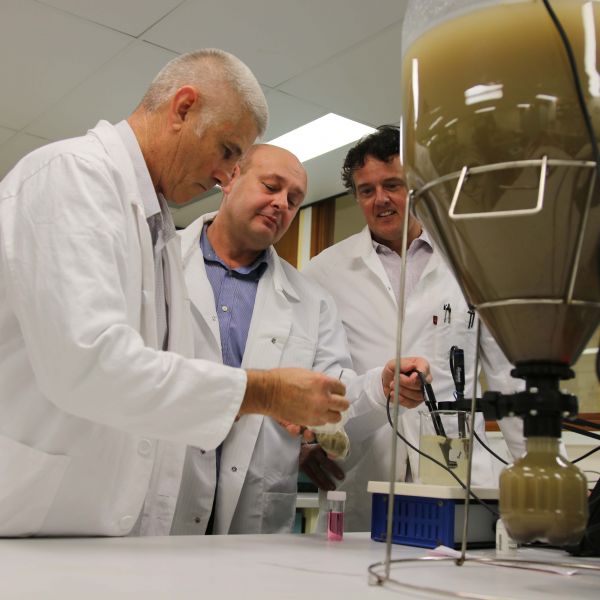Dentrifying Bioreactors information, designs, tips, best use and information.
What is a woodchip bioreactor?
 |
| Purdue University |
Bioreactors are essentially subsurface trenches filled with a carbon source, mainly wood chips, through which water is allowed to flow just before leaving the drain to enter a surface water body. The carbon source in the trench serves as a substrate for bacteria that break down the nitrate through denitrification or other biochemical processes. Bioreactors provide many advantages:
- They use proven technology
- They require no modification of current practices
- No land needs to be taken out of production
- There is no decrease in drainage effectiveness
- They require little or no maintenance
- They last for up to 20 years.
How do bioreactors work? Organisms from the soil colonize the woodchips. Some of them break down the woodchips into smaller organic particles. Others “eat” the carbon produced by the woodchips, and “breathe” the nitrate from the water. Just as humans breathe in oxygen and breathe out carbon dioxide, these microorganisms breathe in nitrate and breathe out nitrogen gas, which exits the bioreactor into the atmosphere. Through this mechanism, nitrate is removed from the tile water before it can enter surface waters.
Understanding Woodchip Bioreactors
Designing and Constructing Bioreactors to Reduce Nitrate Loss from Subsurface Drains (Illinois, tri-fold format)
Woodchip Bioreactors for Nitrate in Agricultural Drainage (Iowa, 4 pages. Click "Download" in blue table.)
"Evaluating Denitrifying Bioreactors" - On the Ground with the Leopold Center (Video from Iowa, 2:35)
Bioreactors: Benefits and Potential Challenges" - Iowa Learning Farms Webinar (Video recording from Iowa)
Design Information
Denitrifying Bioreactor (Code 747)NRCS Interim Conservation Practice Standard in Iowa and Indiana. Iowa Statement of Work
Interactive routine that can be used to determine size, cost and evaluate performance of a bioreactor installed in a field with a specified soil and county in Illinois:
http://www.wq.illinois.edu/dg/Equations/Bioreactor.exe.
Financial Incentives
Denitrifying Bioreactors are eligible for financial assistance through the NRCS Environmental Quality Incentives Program, Where the conservation practice standard has been accepted, financial assistance is often available through EQIP. In Indiana, the incentive is $5800. Incentives in Iowa
____











































